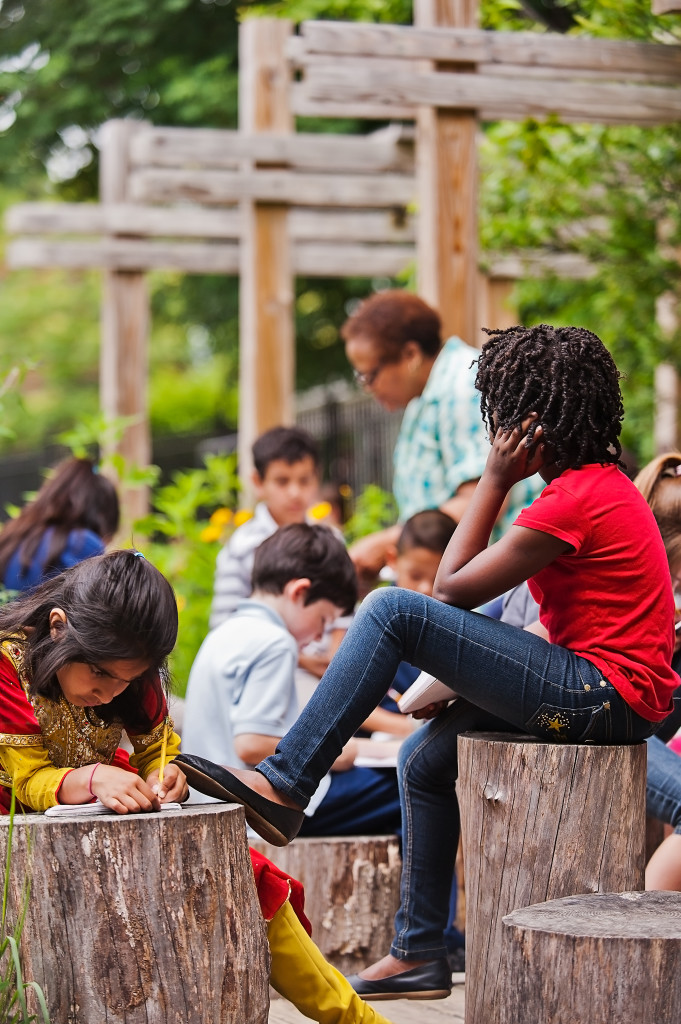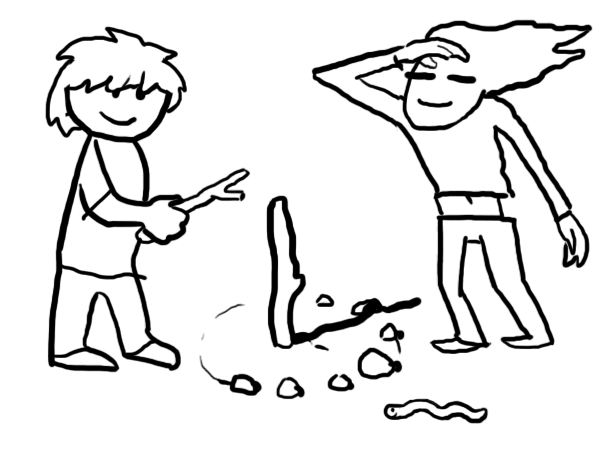What Makes a Classroom?
What are the first images that pop into your head when you hear the word classroom? For most people, a classroom means four square walls, rows of desks, blackboards and whiteboards, projectors and screens, banks of fluorescent lights.
But do all classrooms need to be indoors? We learn about the world by living in the world. Education happens everywhere, inside and outside of the traditional school classroom. With increased awareness of children’s needs for a variety of learning places, school communities worldwide are transforming their school grounds into dynamic, educational and ecological outdoor classrooms.
Our familiar indoor classrooms are a product of the industrial age. They were designed to keep groups of students quiet and immobile, so that they could be controlled in their movements and regulated by a single teacher—places where children learn to be efficient, punctual and quietly industrious at individual workstations. But these Victorian qualities may not be the only goals that are helpful for kids in our contemporary, rapidly changing world.

A typical indoor classroom at Killarney Secondary School, Vancouver (Image: Madeline Brewster)
At first, people often think of an outdoor classroom as simply an indoor classroom transposed to the outside: an outdoor amphitheatre with rows of seats facing the teacher, outdoor whiteboards, and a roof to keep the rain off. But an outdoor classroom does not have to be an echo of the stereotypical indoor classroom, or continue to frame learning with the teacher at the centre transmitting a standardized and highly fragmented curriculum. When teaching outside with a more creative approach, the place itself becomes part of the teaching team, and learners get the chance to move, explore, listen and observe a world where everything is alive and interconnected.
It is important to think about the ways that an outdoor classroom is different from a typical indoor classroom, and how it offers very different kinds of learning possibilities. Teaching outside may seem daunting – it’s too wet, too cold, too hot, too windy, distracting, dirty, and maybe even dangerous. With practice and support, these “challenges” can become profound educational experiences for both students and teachers. A windy day becomes a physics lesson and a lesson about weather. The hot sun becomes part of a geography lesson about the path of the sun and orientation as students build their own sundial and map out the ideal location for a school garden.

An informal outdoor classroom at a Boston elementary school (Klopfer Martin Design Group | Image: Christian Phillips Photography )
Playgrounds, school gardens and other outdoor classrooms offer the simple but increasingly rare experience of being outdoors, in all kinds of weather, observing the cycles of the sun and rain, feeling the texture of the soil, smelling the air, noticing the shapes and patterns of plants in an ecosystem, getting ‘up close’ with bees, worms and birds and learning about their ways. Many people have very little time outdoors, and generations of children may be growing up with ‘nature deficit disorder’ (as Richard Louv named it in his book, Last Child in the Woods). Spending time in the living world outdoors has been shown to help people relax, experience greater physical and mental health and well-being, and feel gratitude and empathy through a sense of connectedness with all living things. This is a very important kind of learning.
